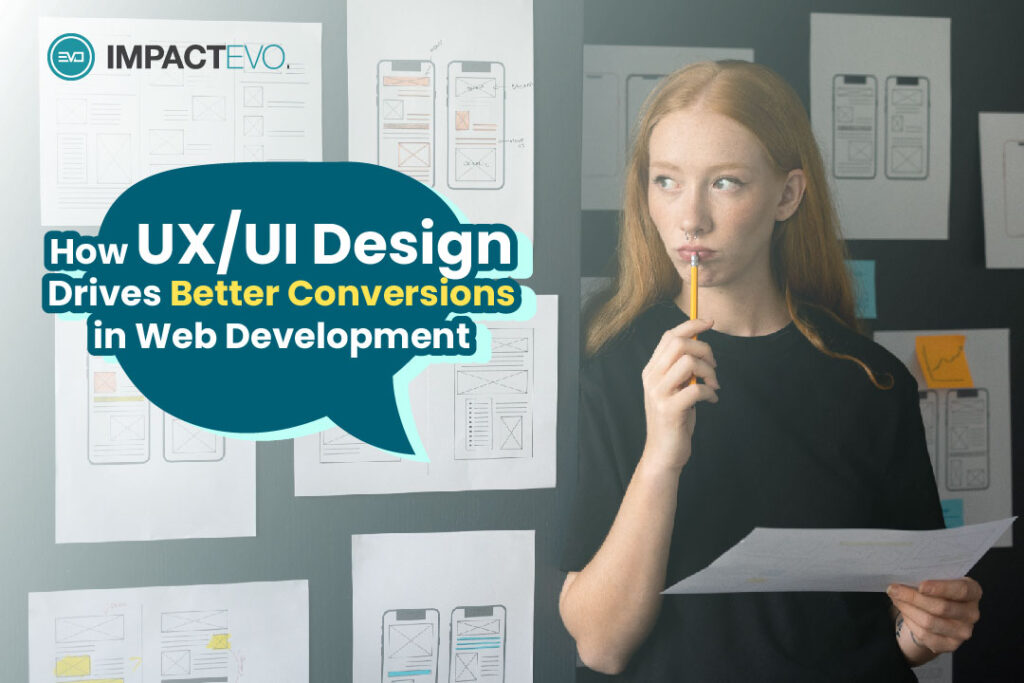Web design is constantly evolving, and staying on top of trends is crucial for businesses that want to stand out online. In 2025, the focus is on user experience, interactivity, and sustainability. Here’s a look at the top web design trends you need to watch to ensure your site remains modern, engaging, and effective.
1. Minimalist Yet Bold Designs
What’s Trending:
Minimalism is taking a vibrant turn in 2025, combining clean layouts with bold colors and striking typography.
Why It Works:
- Simple, uncluttered designs enhance readability and navigation.
- Bold visuals grab attention and leave a lasting impression.
💡 Pro Tip: Pair minimalist layouts with oversized, vibrant headlines to create a visually striking user experience.
2. Dark Mode Designs
Why It’s Trending:
Dark mode is more than just a user preference—it’s becoming a standard option for modern websites.
Benefits:
- Reduces eye strain for users browsing at night.
- Gives websites a sleek, contemporary look.
- Saves battery life on OLED devices.
💡 Pro Tip: Offer a toggle for users to switch between light and dark modes for maximum accessibility.
3. AI-Powered Personalization
What’s Changing:
AI is enabling websites to deliver hyper-personalized experiences by adapting content, layouts, and recommendations in real time.
Examples:
- Personalized product recommendations based on user behavior.
- Dynamic layouts that adjust to individual preferences.
💡 Pro Tip: Use AI tools like ChatGPT or Dynamic Yield to create more engaging, user-specific content.
4. Immersive Scrolling Experiences
Why It’s Trending:
Interactive scrolling techniques, such as parallax effects and storytelling animations, are transforming how users engage with websites.
How It Works:
- Content unfolds dynamically as users scroll, keeping them engaged longer.
- Creates a sense of depth and movement, making pages feel alive.
💡 Pro Tip: Use scrolling effects sparingly to avoid overwhelming users and slowing down your site.
5. Sustainability in Web Design
What’s Driving This Trend:
Eco-conscious users are pushing brands to adopt sustainable web practices, including reducing carbon footprints.
How to Implement It:
- Optimize images and code to reduce energy consumption.
- Choose green hosting providers that use renewable energy.
- Design lighter websites that load faster and consume less data.
💡 Pro Tip: Highlight your commitment to sustainability in your website’s about or mission page.
6. Advanced Micro-Interactions
What They Are:
Subtle animations and feedback that improve user interactions, such as button hovers or progress indicators.
Why They Matter:
- Enhance user engagement by providing instant visual feedback.
- Make navigation intuitive and enjoyable.
💡 Pro Tip: Incorporate micro-interactions to guide users through actions like form submissions or purchases.
7. Voice User Interface (VUI)
Why It’s Gaining Momentum:
With the rise of voice search and smart speakers, websites are integrating voice capabilities to enhance accessibility.
Applications:
- Voice-activated search functionality.
- Audio feedback for navigation assistance.
💡 Pro Tip: Ensure your website is optimized for voice commands and queries for better usability.
8. 3D and Immersive Elements
What’s Trending:
Websites are using 3D visuals and augmented reality (AR) to create immersive user experiences.
Why It Works:
- Engages users by making content interactive and dynamic.
- Perfect for showcasing products or services in a unique way.
💡 Pro Tip: Use lightweight 3D elements to avoid slowing down your site’s loading time.
9. Inclusive and Accessible Design
Why It’s Essential:
Accessibility is no longer optional—it’s a legal requirement and a user expectation.
Key Features:
- Text-to-speech compatibility.
- Keyboard-friendly navigation.
- High-contrast modes for better readability.
💡 Pro Tip: Use accessibility checkers like WAVE to ensure your website meets WCAG guidelines.
10. Dynamic Typography
What’s Changing:
Typography is becoming a focal point of web design, with variable fonts and animations making text more interactive.
Why It Works:
- Keeps users engaged with visually interesting text.
- Helps convey brand personality and tone.
💡 Pro Tip: Use kinetic typography in headers to grab attention without overwhelming the design.
11. Seamless Mobile-First Design
Why It’s a Must:
Mobile traffic dominates the web, and users expect flawless experiences on their devices.
How to Succeed:
- Use responsive layouts that adapt seamlessly to different screen sizes.
- Prioritize speed and ease of navigation for mobile users.
💡 Pro Tip: Test your website on multiple devices and browsers to ensure consistent performance.
12. Focus on Speed and Performance
Why It’s Critical:
Users won’t wait for slow websites, and neither will search engines.
How to Optimize:
- Compress images and optimize code.
- Use a content delivery network (CDN) to reduce loading times.
- Prioritize server response times with reliable hosting.
💡 Pro Tip: Regularly audit your website’s speed using tools like GTmetrix or Google PageSpeed Insights.
Conclusion
2025 is all about creating user-centric, visually dynamic, and environmentally conscious web designs. By staying ahead of these trends, your website can provide engaging experiences, drive conversions, and set your brand apart.
Ready to elevate your web design? Contact Impact Evo today for cutting-edge solutions tailored to your business!



